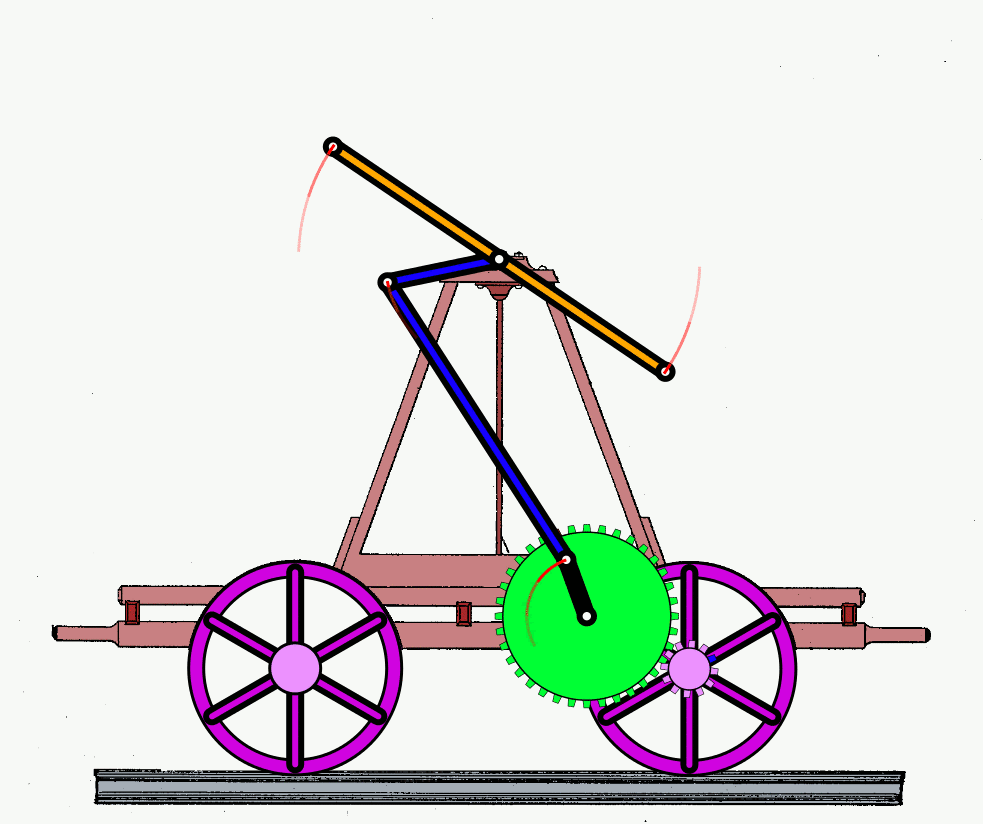Feliks
Well-Known Member
- Joined
- May 6, 2010
- Messages
- 144
- Reaction score
- 48
Well, this is my new idea ... I decided to get rid of force, guide the piston ...
*This gives an average of about 10% higher efficiency of the engine, because we do not waste energy on friction .. In marine, eolnobrotowych, so far used to be used crosshed.
Instead, I used such a machanism, based on oil like a pump, with a rope as a working element .. Because the rope can not be "pushed", I put the other such arm in motion to the other side .. And from this simple connecting rod driving the crankshaft. Thanks to this, there is no side force anywhere in the whole mechanism .. It is in a traditional design, very large force, reaching up to 1/6 of the total force in the connecting rod driving the crankshaft .. Here its size is calculated .. I think that the average 10% of the engine's reliability will be obtained. The engine has very small orots, 100 rows per minute, and I think that this will work ... In the steam locomotive, we will get rid of the slider, and its efficiency will increase significantly ..
Certainly the demand for oil, which suppressed this large friction, will be much smaller ..
Maybe someday it will go to F1
http://www.marinediesels.info/Theory/Thrust_on_Crosshead_Guides.htm

[ame]https://www.youtube.com/watch?v=QoCEcjJxPZs[/ame]
[ame]https://www.youtube.com/watch?v=QOtN7yFXP8Y[/ame]
Regards Andrew
*This gives an average of about 10% higher efficiency of the engine, because we do not waste energy on friction .. In marine, eolnobrotowych, so far used to be used crosshed.
Instead, I used such a machanism, based on oil like a pump, with a rope as a working element .. Because the rope can not be "pushed", I put the other such arm in motion to the other side .. And from this simple connecting rod driving the crankshaft. Thanks to this, there is no side force anywhere in the whole mechanism .. It is in a traditional design, very large force, reaching up to 1/6 of the total force in the connecting rod driving the crankshaft .. Here its size is calculated .. I think that the average 10% of the engine's reliability will be obtained. The engine has very small orots, 100 rows per minute, and I think that this will work ... In the steam locomotive, we will get rid of the slider, and its efficiency will increase significantly ..
Certainly the demand for oil, which suppressed this large friction, will be much smaller ..
Maybe someday it will go to F1
http://www.marinediesels.info/Theory/Thrust_on_Crosshead_Guides.htm

[ame]https://www.youtube.com/watch?v=QoCEcjJxPZs[/ame]
[ame]https://www.youtube.com/watch?v=QOtN7yFXP8Y[/ame]
Regards Andrew











































































